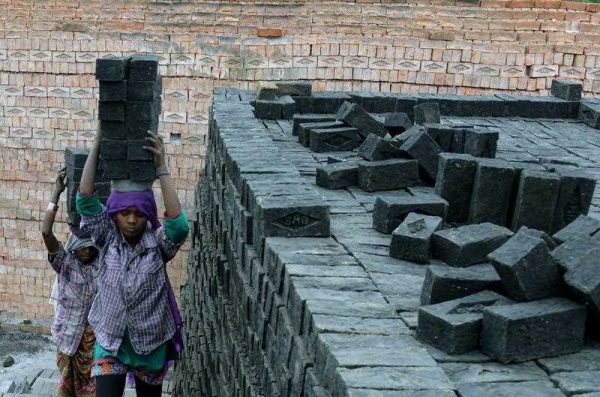Manufacturing has not brought much new employment, and most of the recent rise in manufacturing employment has been in the informal sector.
The productivity of India’s manufacturing sector is low, partly because the small size of most manufacturing firms makes it difficult for them to exploit economies of scale. Despite abundant, low-skilled and relatively cheap labour, Indian manufacturing is surprisingly capital and skill intensive. Taxes and complex labour regulations inhibit firm growth. Land acquisition is slow, companies face frequent power outages and transport infrastructure is below par. This is especially harmful as manufacturing is highly reliant on well-functioning infrastructure.
Stronger manufacturing would increase productivity and make growth more inclusive.
Despite the effervescent innovation of the Modi administration, the policy legacy at the foundation of modern India still sits heavily upon policy delivery and outcomes. After two centuries of exploitative colonialism, India effectively locked itself out of global trade and investment flows altogether — just at the time when advanced countries were tearing down their mercantilist tariff walls to make way for the liberal, post-war economic order. The mentality of India’s early central planners in New Delhi, with its highly regulated, import substitution industrialisation model of development, remains remarkably resilient and continues to condemn all but a privileged pocket of urban and public sector employees to the margins of the modern economy. The reforms of the 1990s offered the prospect of a fundamental change of direction that lost its way under the Indian National Congress during the government of Manmohan Singh.
Prime Minister Modi’s attempt to kickstart India’s opening anew has given promise of return to higher potential growth. And there is now good reason for optimism about the prospects for Indian growth. The aspirations of India’s middle class have put high expectations on the Modi government. While China’s growth is slowing down as it rebalances its economy away from investment and exports and toward domestic demand, India’s has bounced back from between 5 and 6 per cent to a forecast of 7.6 per cent this year. In February, India’s Central Statistical Organisation revised its GDP statistics, resulting in predictions much rosier than almost every other near-term economic data. And according to the IMF, India is projected to maintain a growth rate of over 7 per cent until 2016 — the highest rate among the world’s major economies.
But there is still quite a way to go to secure this outlook.
In this week’s lead essay, Alok Sheel, economic advisor to the government in the state of Kerala and former secretary of the prime minister’s economic advisory council, points to the ‘long shadow’ between ideas and reality in Indian policy making. While it may turn out as many in India now claim, he says, that India’s ‘manifest destiny’ is to overtake China and become the fastest growing major economy and a world power, unless India successfully introduces productivity reforms and opens its markets, this ‘destiny’ will remain a pipe dream.
High population growth, of course, means that per capita GDP growth is much lower than overall GDP growth. India’s high GDP growth is about large additions to the labour force in low productivity small enterprises, which dominate the profile of the Indian manufacturing sector, despite some islands of global manufacturing scale. India’s labour productivity has been much lower than China’s — and the gap is widening. As Sheel points out, in 2011, China had 8.8 per cent per capita GDP growth, while India’s was 5.8 per cent. By 2014, China’s per capita GDP growth had fallen to 6.7 per cent, but India’s per capita GDP growth rate plummeted to 2.7 per cent.
What’s the problem?
There are four big problems, according to Sheel. Labour-intensive manufacturing in India continues to face daunting institutional and structural constraints. Large areas of India’s agricultural sector continue to rely on rainwater. And employment guarantee schemes may have shifted income to labourers without matching growth in productivity. Most importantly, growing infrastructural and governance bottlenecks have lowered both labour and capital productivity.
‘Being poor is all about low productivity and India is seeing the effects’, Sheel observes. Only sub-Saharan Africa has a worse track record in poverty reduction: even India’s neighbours, like Bangladesh, have done better. The ‘Make in India’ initiative seeks to expand the scale and contribution of modern manufacturing but the focus should be on encouraging a large-scale movement of labour from low productivity agriculture and petty production to high productivity manufacturing and services. India’s employment protection legislation in the formal manufacturing sector remains among the most restrictive in the world. The share of manufacturing goods in India’s exports is declining. And Indian small and medium enterprises are mostly absent from Asia’s dynamic vertically-integrated, production-sharing chains.
Opening up the market to international competition is the priority, Sheel concludes. Low productivity thrives in closed markets. The opportunity for a change in strategic direction is there — through domestic reform linked to India’s participation in the Regional Comprehensive Economic Partnership negotiations that are due to conclude this year. Thus far, India has been lead in the saddle on progress towards agreement. That may be changing, and if it does, it offers a grand chance for lifting Indian productivity and securing higher potential growth in the longer term.
Peter Drysdale is Editor of the East Asia Forum.

